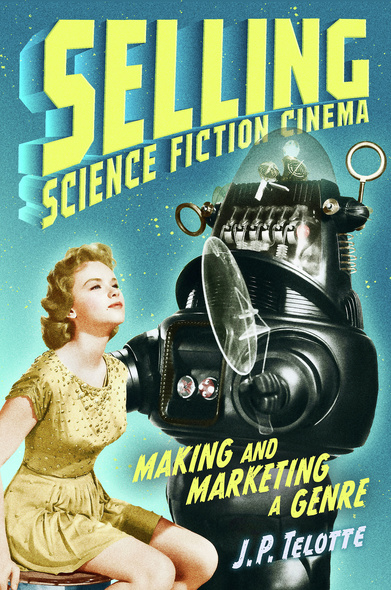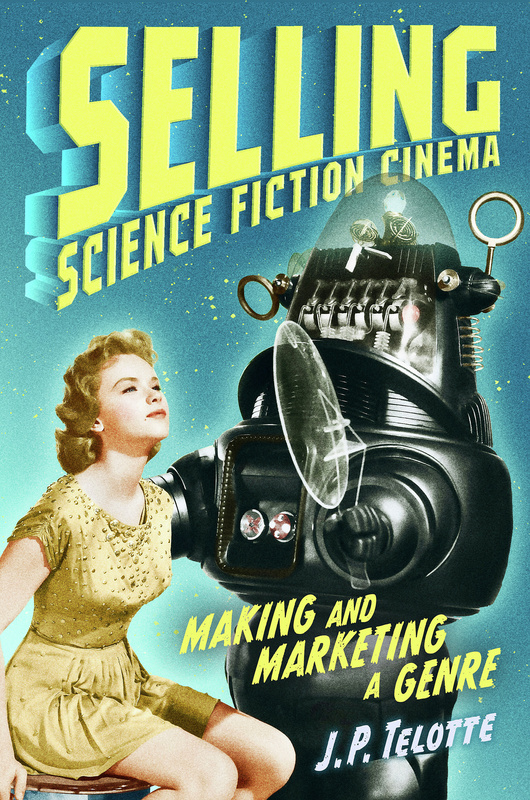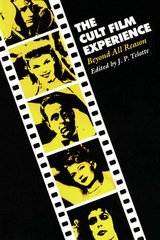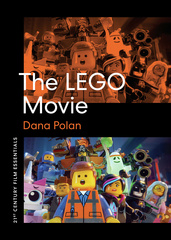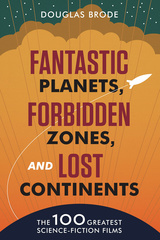Selling Science Fiction Cinema
Making and Marketing a Genre
How science fiction films in the 1950s were marketed and helped create the broader genre itself.
For Hollywood, the golden age of science fiction was also an age of anxiety. Amid rising competition, fluid audience habits, and increasing government regulation, studios of the 1950s struggled to make and sell the kinds of films that once were surefire winners. These conditions, the leading media scholar J. P. Telotte argues, catalyzed the incredible rise of science fiction.
Though science fiction films had existed since the earliest days of cinema, the SF genre as a whole continued to resist easy definition through the 1950s. In grappling with this developing genre, the industry began to consider new marketing approaches that viewed films as fluid texts and audiences as ever-changing. Drawing on trade reports, film reviews, pressbooks, trailers, and other archival materials, Selling Science Fiction Cinema reconstructs studio efforts to market a promising new genre and, in the process, shows how salesmanship influenced what that genre would become. Telotte uses such films as The Thing from Another World, Forbidden Planet, and The Blob, as well as the influx of Japanese monster movies, to explore the shifting ways in which the industry reframed the SF genre to market to no-longer static audience expectations. Science fiction transformed the way Hollywood does business, just as Hollywood transformed the meaning of science fiction.
J. P. Telotte offers a thoughtful, well-researched overview of how these films were marketed to audiences at their height in Selling Science Fiction Cinema...Telotte also offers a thought-provoking look at contemporary sci-fi marketing approaches during such a fascinating time in which so much content is available to users via streaming platforms rather than the past 'traditional' approach of attending the cinema.
Focusing on various promotional campaigns, publicity strategies, and cultural products, this fascinating study offers a material-based history of the selling of mid-20th-century science fiction cinema...Deploying precise critical insight and drawing on an array of archival findings, Telotte considers the marketing of such films as The Thing from Another World (1951), Forbidden Planet (1956), and Godzilla, King of the Monsters (1954), and he adroitly generates new insights and readings of these films and their significance to history and culture. Considering the discourse circulating around science fiction film’s place in literary fan culture, the genre’s position in society, and the shifting attitudes toward speculative cinema of studios in both Hollywood and Japan, Telotte’s work emerges as an engaging addition to film studies.
This is another great book by J. P. Telotte. Selling Science Fiction Cinema makes significant contributions to the understanding of both SF film and SF magazines. Thoroughly researched and clearly written, it engages with current concerns in film scholarship around industry practices and how they affect the meaning and reception of the films themselves.
J. P. Telotte has thoroughly synthesized the various arguments of prior critics, but he has his own tale to tell about techniques for drawing people into the cinemas in a time of dwindling audiences; there were wildly differing intuitive approaches, a variety of tactics and strategies that showcase the ambiguous and protean boundaries of SF. This highly informative work is a delight to read.
J. P. Telotte is a professor emeritus of film and media studies at the Georgia Institute of Technology. He is the author of Animating the Science Fiction Imagination and Movies, Modernism, and the Science Fiction Pulps and a former coeditor for the film journal Post Script.
- Acknowledgments
- Chapter 1. Marketing and Making Science Fiction
- Chapter 2. What Is This Thing? Framing and Unframing a New Genre
- Chapter 3. Pondering the “Pulp Paradox”: Pal, Paramount, and the SF Market
- Chapter 4. Moppets and Robots: MGM Markets Forbidden Planet
- Chapter 5. Another Form of Life: Audiences, Markets, and The Blob
- Chapter 6. Selling Japan: Making, Remaking, and Marketing Japanese SF
- Conclusion
- Notes
- Select Filmography
- Select Bibliography
- Index

